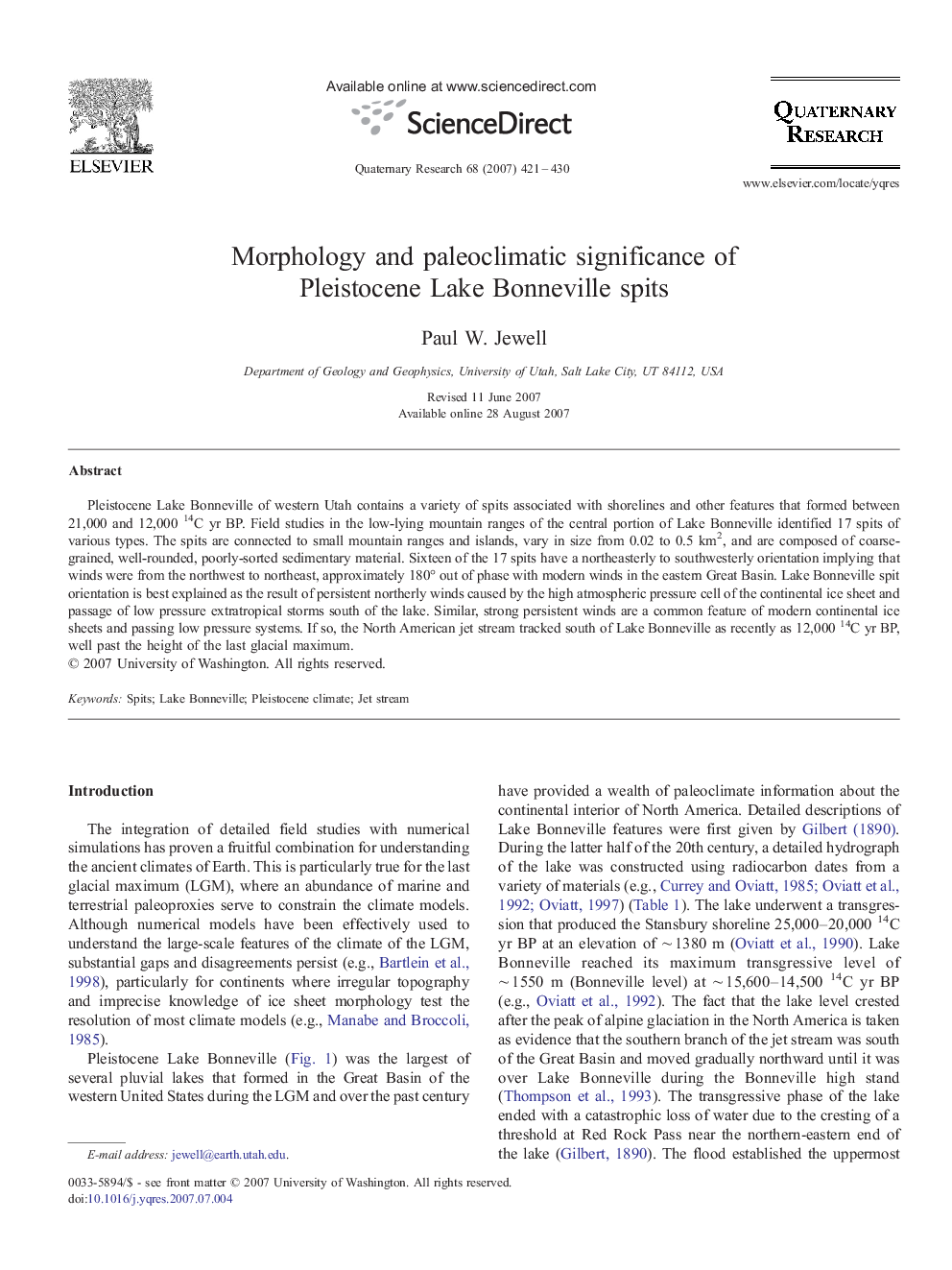| Article ID | Journal | Published Year | Pages | File Type |
|---|---|---|---|---|
| 1046062 | Quaternary Research | 2007 | 10 Pages |
Abstract
Pleistocene Lake Bonneville of western Utah contains a variety of spits associated with shorelines and other features that formed between 21,000 and 12,000 14C yr BP. Field studies in the low-lying mountain ranges of the central portion of Lake Bonneville identified 17 spits of various types. The spits are connected to small mountain ranges and islands, vary in size from 0.02 to 0.5 km2, and are composed of coarse-grained, well-rounded, poorly-sorted sedimentary material. Sixteen of the 17 spits have a northeasterly to southwesterly orientation implying that winds were from the northwest to northeast, approximately 180° out of phase with modern winds in the eastern Great Basin. Lake Bonneville spit orientation is best explained as the result of persistent northerly winds caused by the high atmospheric pressure cell of the continental ice sheet and passage of low pressure extratropical storms south of the lake. Similar, strong persistent winds are a common feature of modern continental ice sheets and passing low pressure systems. If so, the North American jet stream tracked south of Lake Bonneville as recently as 12,000 14C yr BP, well past the height of the last glacial maximum.
Related Topics
Physical Sciences and Engineering
Earth and Planetary Sciences
Geology
Authors
Paul W. Jewell,
